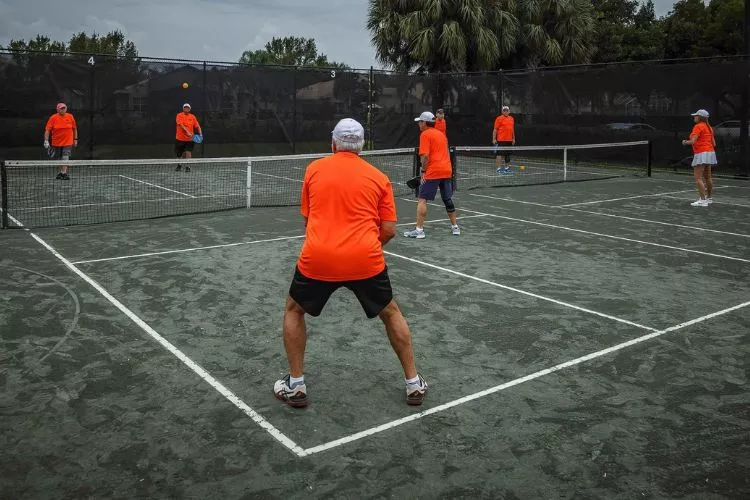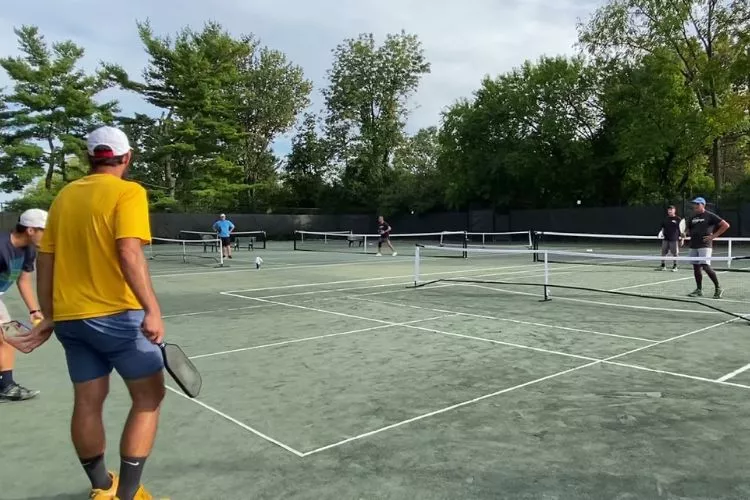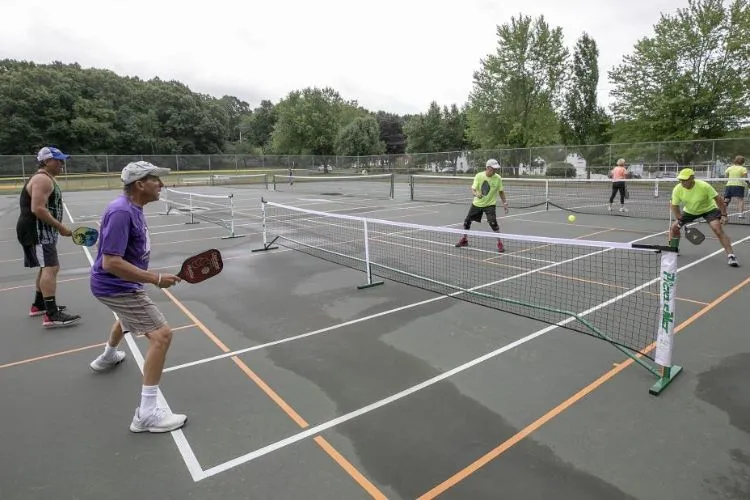Pickleball has gained immense popularity in recent years, attracting players of all ages and skill levels.
As the game continues to grow, so does the interest in playing it on different court surfaces.
But, can pickleball be played on a clay court?
Well, this is a question that often arises among pickleball enthusiasts. That’s why in this article, we will delve into the possibilities and intricacies of playing pickleball on a clay court.

can pickleball be played on a clay court?
Yes, pickleball can be played on a clay court. While most commonly played on hard courts, pickleball enthusiasts can enjoy the game on various surfaces, including clay.
Playing pickleball on a clay court introduces a slower ball speed, higher bounce, and unique challenges. However, it also offers advantages such as increased reaction time, reduced joint impact, and enhanced grip for spin shots.
With proper court preparation and adjustments to shot selection and footwork, players can have a rewarding experience playing pickleball on a clay court.
Types of Courts for Pickleball
Pickleball can be played on different types of surfaces, each with its own unique characteristics. The most common types of courts are hard courts, grass courts, and clay courts.
While hard courts provide a consistent and faster playing surface, grass courts offer a softer and slower experience. Clay courts, on the other hand, introduce a whole new level of challenge and strategy to the game.
Playing Pickleball on a Clay Court

Advantages
Playing pickleball on a clay court presents a range of advantages. One advantage is the slower ball speed and higher bounce that clay courts typically provide. This allows players more time to react and adjust their shots.
The softer surface also reduces the impact on joints, making it an ideal choice for players with joint sensitivities. Additionally, the clay surface offers excellent grip, enhancing players’ ability to execute spin shots with precision.
Challenges
While clay courts offer several benefits, they also pose unique challenges for pickleball players. One of the main challenges is the unpredictability of the surface. Clay can become slippery, especially after rain or when not properly maintained.
This can affect players’ movement and shot accuracy. Another challenge is the need to adapt to the slower court speed, which requires players to adjust their timing and shot selection.
Additionally, the maintenance of clay courts can be more time-consuming compared to other surfaces.
Tips for Playing Pickleball on a Clay Court:
- Footwork and Balance: Focus on maintaining good footwork and balance, as clay courts can be more slippery. Keep your weight centered and be prepared to make quick adjustments.
- Shot Selection: Adjust your shot selection to account for the slower ball speed and higher bounce. Use your opponents’ pace to your advantage and consider incorporating more spin shots into your game.
- Court Awareness: Stay aware of the court conditions and adapt your strategy accordingly. If the court is damp or slippery, opt for safer shots and minimize risks.
- Maintain a Clean Court: Regularly sweep the court to remove any loose clay and debris, which can affect your movement and shots. Avoid dragging your feet while playing to prevent clay from building up on your shoes.
Preparing a Clay Court for Pickleball
To ensure optimal playing conditions on a clay court, proper preparation is essential. Here are some steps to follow when setting up a clay court for pickleball:

- Clear the Court: Remove any debris, leaves, or loose clay from the court surface.
- Level the Court: Use a drag brush or a drag mat to level the court and remove any uneven spots.
- Water the Court: Lightly water the clay court to prevent excessive dust and create better playing conditions.
- Maintain the Court: Regularly maintain the court by sweeping or rolling it to keep the surface compact and consistent.
Frequently Asked Questions (FAQs)
Can pickleball be played on any type of clay court?
While pickleball can technically be played on any type of clay court, it is recommended to play on well-maintained clay surfaces that provide good traction and consistent playability.
How does playing pickleball on a clay court differ from playing on a hard court?
Playing on a clay court introduces slower ball speed, higher bounce, and different footwork due to the surface’s lateral slide. Hard courts, on the other hand, offer a faster game with less bounce and more predictable shots.
What are the benefits of playing pickleball on a clay court?
Playing on a clay court can provide a slower game, reduced impact on joints, enhanced grip for spin shots, and an added layer of challenge and strategy.
Conclusion:
Playing pickleball on a clay court can be a unique and rewarding experience for players.
While it presents some challenges, it also offers advantages such as increased reaction time, reduced joint impact, and improved shot precision.
By following the tips and techniques outlined in this article, players can adapt and excel on a clay court.
Embrace the challenge, adjust your game, and enjoy the exciting world of pickleball on clay!

Pickleball’s more than a game to me—it’s a passion. I write, sharing its highs and lows, the thrills and the lessons. Some tales might draw you to the court, while others give a hint of the game’s magic. So, curious about my journey? Ready to dive deep into the world of pickleball with me? Let’s go.
